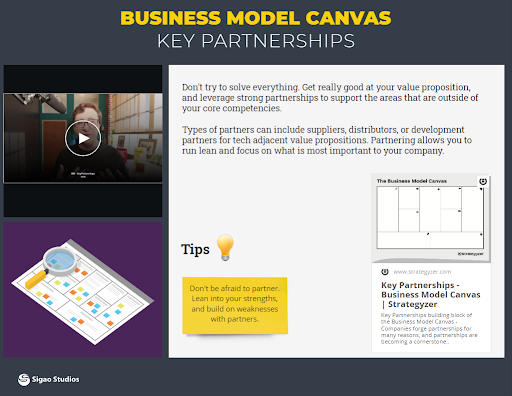Scrum Spotlight: Chris Sims and the Innovation Playbook
How Students’ Needs in a Virtual Environment bring Innovation to the Forefront for Scrum Trainer Chris Sims
To many, the Scrum framework promises triumph. For entrepreneurs, small businesses, and Fortune 500 organizations, Scrum is a tool that enables true agility. Scrum defends organizations against the perils of unprecedented change, competitive markets, and unstable economic circumstances. It also champions innovation, rapid adoption of new technologies, and radical focus on delivering value to customers . Case studies, HBR articles, and Dr. Jeff Sutherland (co-creator of Scrum) have reiterated this fact for years.
In 2021, however, a rate of global change unlike we’ve ever seen has emerged; a new virtual stage has been set.
The mantra “Change or Die” rings as true now as it did when Dr. Jeff Sutherland’s book, “Scrum: The Art of Doing Twice the Work in Half the Time” was first published. Organizations simply can’t afford to not deliver. Glorified proofs-of-concept, sequential and linear approaches to project management, and 18 month R&D cycles live in the past. Organizations, teams, and individuals that are able to launch offerings into the market rapidly, successively, and at scale, will succeed. And, along the way, they will be laying the foundation for others to innovate, deliver, and improve in the future.
That’s exactly what Chris Sims and his team at Sigao Studies are doing.
 Chris Sims is a Scrum Trainer, Scrum@Scale Trainer, and passionate entrepreneur. He is the founding team member, CEO, and Chief Product Owner of Sigao Studies, custom development and coaching company. With over 20 years of programming experience and 16 years of project management experience, Chris confidently, and passionately, enables teams to solve complex business problems through coaching, training, and software development.
Chris Sims is a Scrum Trainer, Scrum@Scale Trainer, and passionate entrepreneur. He is the founding team member, CEO, and Chief Product Owner of Sigao Studies, custom development and coaching company. With over 20 years of programming experience and 16 years of project management experience, Chris confidently, and passionately, enables teams to solve complex business problems through coaching, training, and software development.
With impressive and formidable roots in the Agile community, Chris is no stranger to rapid change. Years of experience in providing development and training services have allowed Sigao to help clients identify complex business problems and achieve innovative solutions. In the last year, however, it has become evident that there were greater changes emerging in his industry. Chris and his team began sensing, scanning, and scouting the market to uncover trends and deliver even more value to students of Agility.
Read our interview with Chris below to get an inside look at how he continuously improves his approach to agile education so that students remain engaged and get the most in the virtual learning environments. And, along the way, how new initiatives, such as CAVU and Articulate 360, help Sigao inspire future Agilists, innovators, and game changers.
Interview with Scrum Trainer Chris Sims:
Question: Hello, and welcome! Give us your elevator pitch – who are you and what do you do?
I help people embrace learning through failure and rapid change to solve real, human, problems. I firmly believe that if you aren’t better today than you were yesterday, and striving to be better tomorrow than you are today, you will fall behind. That is what Scrum empowers you to do — learn fast and do it at a sustainable pace. In my training and coaching, I strive to give a practical and heart-focused approach to continuous improvement. I happen to use Scrum and business agility to realize these goals.
Question: What originally brought you to the Scrum Trainer community?
My Scrum training journey started with a very ill-informed speaking topic.. “Surfing the Agile Waterfall…how to combine Agile and waterfall” — I gave this horrible talk when I worked at the University of Alabama’s Center for Advanced Public Safety. Through all of that, I was asked to lead Alabama’s largest IT project and to lead one of the first “fully Agile” projects in state history… 1 week into it, and my boss was demanding a 3-year “roadmap” (aka indchart) and all the bad karma from that original talk I gave came back to bite me. But, I learned a lot about the nightmare of implementing Scrum when leadership isn’t on board.
A couple of years ago, I had the opportunity to attend a Scrum@Scale Train the Trainer course by Scrum Inc. where I met some brilliant Agilists. That event was a catalyst that transformed me and my company. I’ve been honored to be a part of this community and am excited at being a part of spreading the power of good Scrum.
Question: You started Sigao Studios 7 years ago. What was the original vision for your company?
My co-founders and I led a large government project. During that engagement, we were able to learn a lot about building a highly Agile culture inside a very traditional organization. When that ended, we wanted to continue that journey and build a place that empowered others. We started Sigao with the goal of learning how to apply Scrum and Agile and helping others achieve the power of good Scrum.
Question: You’re also CPO of a new initiative, CAVU. Tell us a little bit about this new venture.
CAVU is a social learning platform with the goal of democratizing access to training and coaching.
We started Sigao as primarily a custom development company. We added the training much later. Unfortunately, this has watered down our two messages and the market was often confused — “is Sigao a dev shop or a training company?”
So, 6-months ago, we began learning and pivoting. We know there is a huge need for great coaching and training, but those that need it the most are often those that cannot afford it. We know we can change that.
CAVU is a membership model that combines the best of on-demand learning, instructor-led training, group coaching, and community, and offers it at an affordable subscription price.  It solves the problems of companies like Fledging. Fledging is a hardware company that builds high-end aftermarket parts for Apple devices. They are a small startup that was able to send their employees through our training program – which was only possible thanks to a local scholarship opportunity. When they started our bootcamp, their R&D was taking 18-months. Their most recent product was built in 6-months and is one of their strongest launches ever. We are building more stories like that with CAVU.
It solves the problems of companies like Fledging. Fledging is a hardware company that builds high-end aftermarket parts for Apple devices. They are a small startup that was able to send their employees through our training program – which was only possible thanks to a local scholarship opportunity. When they started our bootcamp, their R&D was taking 18-months. Their most recent product was built in 6-months and is one of their strongest launches ever. We are building more stories like that with CAVU.
Question: Going from in-person learning to a virtual setting has presented challenges and opportunities, especially as it pertains to keeping learners engaged. How have you approached overcoming this challenge?
We’ve embraced it. We saw the pandemic as an opportunity…not just to barely survive, but to thrive. Virtual settings open the door for more people to attend training with unparalleled flexibility. We are continuing our push to create highly engaging training experiences that lean into the tremendous resources available to you in that setting.
Virtual training allows instructors to use some interesting tools that can create highly engaging experiences. It requires a lot of creativity and patience to develop an experience that isn’t just the boring “head in a box” experiences that people are used to. The Scrum training community has truly leaned into this medium and transformed it in some amazingly positive ways.
Question: Tell us about how you’ve leveraged mixed mediums to create a more engaging and enriched learning experience.
In addition to the usual break out rooms and typical Miro/Mural boards, we’ve added more to our approach. Many of our breakouts utilize digital learning tools such as Articulate 360 and even Youtube videos to vary the learning experience for everyone involved.

My typical class is a 21-hour Scrum Master/Product Owner class and I often train up to 40 people with just me and a producer. These activities give my voice a break and my learners an opportunity to interact in a different way. I’ve seen my satisfaction and feedback scores increase significantly in using these approaches. Even in large virtual settings, the tools are helping each learner feel connected and engaged.
Question: Tell us about how you’ve helped to stimulate economic growth and develop the workforce in Alabama.
I firmly believe that part of being a good corporate citizen is to actively invest in the world around you. Technology has long been a catalyst for social and economic change, and I’m proud to help effect positive change in our community.
We moved our business to Birmingham, AL as we saw a community that embraces change and we could actively be a part of. On our journey, we have worked with programs such as InnovateBirmingham, a technology bootcamp that offers a much needed tech talent pipeline and EdFarm (a similar program in the area that is sponsored by Apple). Additionally, we collaborated with Central Six Alabama Works (our local workforce development organization) to build one of the first Registered Apprenticeship programs that extends the bootcamp training into well-paid, hands-on, on-the-job training programs.
We believe that our training should be about more than generating “butts-in-seats.” We measure our success by how our training and coaching impact our participants. Success is measured by companies that grow and careers that are transformed for the better.
Question: Any upcoming events or announcements you’d like to share?
Our focus is heavy into establishing and growing our CAVU platform. We will be releasing two new on-demand courses, “How to Start a Scrum Team” and “Basics of DevOps,” shortly. While that is exciting, we expect this to be the start of opening the floodgates in our on-demand library. We are also exploring licensing opportunities that will allow other people to utilize our social platform in their training and coaching practice. If anyone would be interested in that, please reach out, we’d love to hear how something like this could solve your problems.
